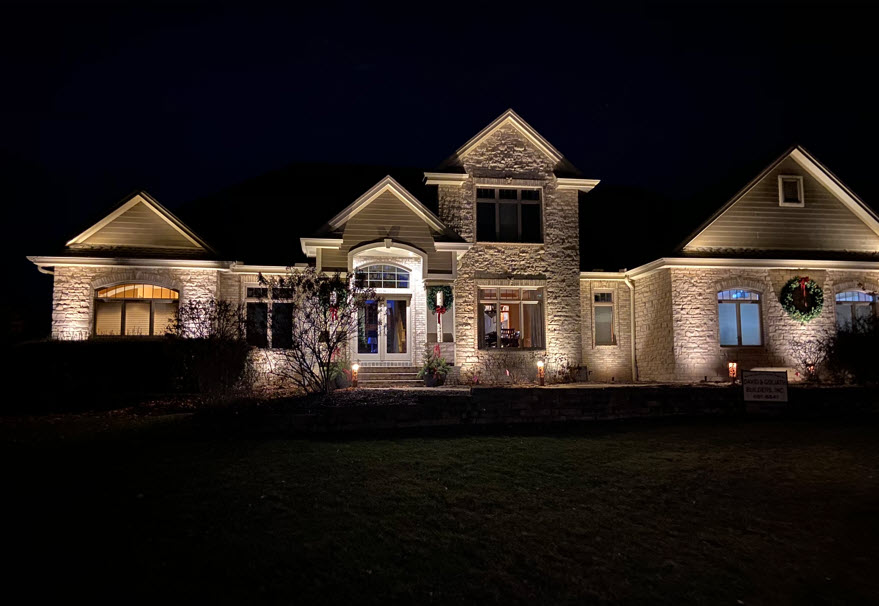Enhancing Your Home with Residential and Architectural Lighting
Lighting plays a pivotal role in shaping the ambiance and functionality of your home. Whether you’re designing a new space or enhancing an existing one, residential lighting and architectural lighting can elevate the aesthetic appeal, increase property value, and improve the overall atmosphere. In this guide, we’ll explore the benefits of residential and architectural lighting, along with tips for maximizing their potential.
What is Residential Lighting?
Residential lighting refers to the lighting solutions used within homes to illuminate living spaces. It includes fixtures like ceiling lights, wall sconces, floor lamps, and more. Each type of residential lighting serves a specific purpose, from enhancing task performance to creating cozy or inviting atmospheres.
Key Types of Residential Lighting:
- Ambient Lighting: General lighting that provides overall illumination, such as chandeliers or recessed lights.
- Task Lighting: Focused lighting that assists with specific activities, like reading lamps or under-cabinet kitchen lights.
- Accent Lighting: Highlights specific features, such as artwork or architectural details, using fixtures like track lighting or wall sconces.

Outdoor Residential Lighting
What is Architectural Lighting?
Architectural lighting is a specialized field that focuses on integrating lighting with the architecture of a space. It is used to highlight architectural features like beams, columns, staircases, or textured walls, as well as to enhance both the interior and exterior elements of a building.
Benefits of Architectural Lighting:
- Highlighting Design Features: Architectural lighting can emphasize the shape, form, and texture of your home’s unique features.
- Creating Depth and Drama: It adds dimension to rooms, turning ordinary spaces into eye-catching focal points.
- Energy Efficiency: Modern architectural lighting often incorporates LED technology, which is not only energy-efficient but also lasts longer than traditional lighting solutions.
Enhancing Your Home with a Combination of Residential and Architectural Lighting
A well-thought-out lighting plan combines both residential lighting and architectural lighting to create a balanced and beautiful living space. Here are some ways to incorporate both:
1. Layer Your Lighting
A layered lighting plan ensures that your space is versatile and functional. Start with ambient lighting for general illumination, then add task lighting where needed, and finally, use architectural lighting to enhance structural elements or artwork.
For example, pendant lights in the kitchen provide functional task lighting while recessed architectural lighting along the ceiling adds an elegant glow.
2. Outdoor Landscape Lighting
Architectural lighting isn’t just for the inside of your home. Outdoor architectural lighting can transform your home’s exterior by highlighting landscaping, pathways, or specific architectural details. Residential outdoor lighting, such as bistro lights for your deck or patio, can create a welcoming and festive atmosphere for evening gatherings.
3. Energy-Efficient Solutions
Many homeowners are turning to LED options for both residential and architectural lighting. LED lights consume less energy, last longer, and come in a variety of styles and colors, allowing you to achieve the look and feel you want while saving on energy costs.
4. Smart Home Integration
With the rise of smart home technology, you can integrate residential and architectural lighting into your home automation system. This allows you to control the lighting remotely, adjust brightness based on the time of day, or set schedules to automatically turn lights on and off. Smart lighting can enhance both security and convenience.

Outdoor Architectual Lighting
Choosing the Right Lighting for Your Home
When selecting lighting for your home, it’s important to consider your specific needs and the architectural elements you want to highlight. Consult with a lighting designer or professional who specializes in both residential lighting and architectural lighting to ensure you achieve the perfect balance.
Things to Consider:
- Room Functionality: Choose lighting that complements the function of each room, from kitchens and bathrooms to bedrooms and living spaces.
- Style: Whether your home is modern, rustic, or traditional, there are lighting options that can match and enhance the architectural style.
- Budget: It’s possible to create a high-end lighting plan on a budget by carefully selecting energy-efficient, cost-effective options.
Conclusion
Enhancing your home with residential lighting and architectural lighting can significantly transform its appearance and functionality. By layering different types of lighting, integrating smart technology, and using energy-efficient solutions, you can create a beautifully illuminated space that reflects your unique style and adds value to your home. Whether you’re looking to make subtle upgrades or undertake a complete lighting renovation, the right combination of residential and architectural lighting is key to creating a warm, inviting, and visually stunning environment.

